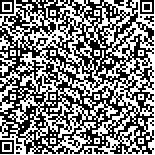| 摘要: |
| 2020年伊始,新冠疫情爆发对我国
的公共卫生安全系统提出了巨大的挑战。武
汉,作为这次疫情的中心,一个千万人口级别
的大都市,如何提升城市面对突发公共卫生
事件的空间韧性值得我们反思。本文识别了
武汉就业空间格局及就业中心的空间特征,
初步揭示了武汉都市区就业中心分布和新冠
疫情爆发危险区的空间关联性。就城市就
业空间格局而言,后疫情时代为减少城市内
部疫情的跨区传播,需要形成合理的防疫分
区;为了构建更具韧性的空间结构,武汉需
要优化就业中心职能类型、分层级优化就业
中心规模并且巩固多中心的就业中心格局。
本研究利用第三次经济普查数据和最新的
企业数据,对武汉3 261 km 2 的主要城镇化地
区进行研究,展示了武汉都市区就业人口的
空间分布情况,为后疫情时代的大都市就业
空间模式优化了提供数据分析基础。 |
| 关键词: 武汉都市区 就业空间 就业中心 防疫空间 后疫情时代 |
| DOI:10.13791/j.cnki.hsfwest.20200505 |
| 分类号: |
| 基金项目:国家自然科学基金面上项目(51978299) |
|
| The Spatial Features of the Employment Center in Wuhan Metropolitan Area and theThinking of Post-Epidemic Times Planning |
|
HUANG Yaping,ZHENG Jiawe,ZHONG Zaoying
|
| Abstract: |
| At the beginning of 2020, the COVID-19 swept the world, posing a huge challenge
to the city’s public health safety system. At the same time, it has triggered a discussion
on the relationship between urban space and public health system. As the center of this
epidemic, Wuhan, as a mega-level metropolis, how to improve the city’s space resilience in
public health emergencies are all worthy of our reflection.
The research area of this paper is Wuhan metropolitan area, with a total land area of 3
261 square kilometers. The scope of Wuhan metropolitan area is the administrative boundary
of townships and towns near the outer ring expressway, which is 37% of the whole urban
area. The data needed for novel coronavirus pneumonia in Wuhan are mainly the data of
employment population in Wuhan and their spatial distribution, and the number of COVID-19
patients in each residential district (as of March 2, 2020). Novel coronavirus pneumonia data
were collected from the third national economic census of Wuhan city in 2013. The data of the
COVID-19 came from the results of community publicity.
In this paper, the second industry of Wuhan is divided into labor-intensive, capital intensive
and technology intensive, and the third industry is divided into producer service industry, consumer
service industry, distributive service industry and social service industry. The employment population
data of various industries are analyzed, and spatial visualization is carried out to obtain the spatial
distribution characteristics of employment in Wuhan metropolitan area.
This paper constructs a set of analysis method based on spatial autocorrelation and residual
analysis to identify the employment center in Wuhan metropolitan area. Based on the above research,
this paper preliminarily explains the scale level characteristics, function type characteristics and
spatial characteristics of the employment centers in Wuhan metropolitan area, and discusses the
spatial correlation between them and the outbreak risk areas of the new crown epidemic.
For the spatial pattern of urban employment in the post-epidemic era, in order to reduce
the cross-regional spread of internal epidemics, it is necessary to form a reasonable epidemic
prevention zone; in order to build a more resilient spatial structure, and Wuhan needs to
optimize the type of employment center functions and optimize employment at different levels
center size and consolidate the multi-center employment center pattern. This study used the
data of the third economic census and the latest enterprise data to study the main urbanization
area of 3 261 square kilometers in Wuhan, to show the distribution of employment space in Wuhan’s urban area, and to provide the data analysis fundament for employment space model optimization in post-epidemic era .
Four main conclusions are drawn: 1) The overall employment spatial pattern of Wuhan metropolitan area is “double center + fan-shaped
radiation + circle layer”. 2) The empirical verification of Wuhan metropolitan area shows that the employment center identification method based
on spatial autocorrelation and residual analysis is a more scientific measurement and identification method of urban employment center. 3) Wuhan
metropolitan area has two first-class employment centers (including 11 employment centers), four secondary employment centers and seven tertiary
employment centers. From the scale level, it belongs to the multi center and high agglomeration structure. In terms of function distribution, it forms
a circle structure dominated by service industry in the core region, dominated by capital and technology intensive industries inside and outside the
Third Ring Road, and surrounded by labor-intensive industries around the periphery. The overall spatial pattern of the heart is the spatial pattern
of “core + circle”. 4) The results show that the spatial distribution of the epidemic situation is closely related to the spatial pattern of employment
in Wuhan City. The polycentric pattern of the employment center is conducive to the formation of a resilient spatial structure of the city. The
optimization of the scale and level of the employment center is conducive to the formation of a reasonable epidemic prevention division. The
optimization of the function type of the employment center helps to reduce the cross regional spread of the epidemic in the city. |
| Key words: Wuhan Metropolitan Area Employment Space Employment Center Epidemic Prevention Space Post-Epidemic Era |


